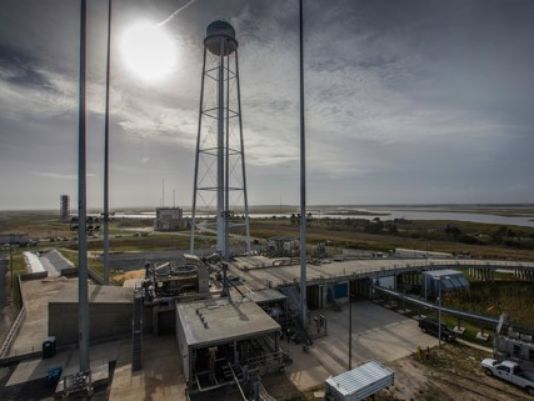Wallops Flight Facility rockets are expected to return to the International Space Station this year after spending a full calendar year on the sidelines of one of NASA's most prominent programs.
If the NASA space center's lineup of launches planned for 2016 were a playbill, the two Antares launches, tentatively scheduled for this summer and fall, would surely get top billing.
But there is a strong supporting cast of seven sounding rocket flights, beginning Feb. 1 with the planned launch of a Terrier-Improved Malemute rocket. Plans also call for 10 sounding rockets to blast skyward at White Sands Missile Range in New Mexico, missions managed by Wallops staff despite the 2,000-mile separation.
And then there are the balloon launches — a dozen in all, including a round-the-world trek originating in New Zealand. Furthermore, aeronautics fans can expect a full slate of aircraft flights all over the globe, pushing the scientific envelope.
All in all, it's a busy year for the facility that oversees all of NASA's suborbital missions, said Bill Wrobel, the facility's director.
"Because of our capabilities and capacities, we can do a lot of different things," he said.
It has been nearly 15 months since an unmanned Antares rocket blew up spectacularly as it hovered above the launchpad at Wallops. The explosion destroyed the rocket, which was carrying supplies to the space station, and caused $16 million in damage to the pad and the immediate area around it on Wallops Island.
Much has changed since then.
Repairs to the pad were substantially finished last September. The aerospace contractor that owned and operated the doomed rocket has changed its name from Orbital Sciences to Orbital ATK after a February 2015 merger with Alliant Techsystems.
Orbital has already resumed cargo deliveries from the space station but not from its home base of Wallops. It lifted a modified version of its Cygnus capsule with an Atlas V rocket last December from Cape Canaveral and plans to do so again there in March.
That month, the Dulles, Virginia,-based company also is expected to conduct a "hot-fire" test at Wallops with its new rocket system, which will use new Russian-made RD-181 engines. The first actual resupply mission is slated for some time this summer; a second is set for the fall.
It will be a big day when the Antares soars again over the mid-Atlantic, Wrobel said.
"There's been a lot of work taking place over the past year to get the vehicle ready again as well as the pad. I think (NASA) folks are excited about the opportunity to do it again," he said.
While that mission is sure to grab headlines nationwide, NASA engineers at Wallops may be forgiven for being too busy to notice. The sounding rocket program will continue sending scientific payloads to the edge of space at a rate of one or more a month.
Often, their findings can be important but esoteric, such as testing equipment for future flights.
"It'll give them a little time in space to see how it worked or didn't work," Wrobel said. "The thought is some of these payloads could become a piece of a NASA mission down the road."
But sometimes, the parabolic trips can make news of their own.
Like the April 2013 Wallops-managed flight out of White Sands. Its discovering of super-hot "nanoflares" radiating out from the sun was ranked No. 14 out of the 100 biggest stories published by Discover magazine in 2015.
Wallops hasn't been in the balloon business locally for several years, but its staff still oversees NASA's balloon program. This spring, several staff members will be heading to New Zealand to see if their unmanned balloon can break their previous continuous flight record of 31 days. Their goal this time, using stronger materials: 100.
If successful, the balloons could give atmospheric researchers a cheaper option than satellites for longer-term studies.
The facility itself is expected to undergo several changes this year.
Crews are set to break ground on a new 14,000-square-foot launch control center in March, replacing a cramped, Cold War-era structure. The facility also is constructing a new 3,000-foot-long runway for small drones this spring, which officials hope will increase drone traffic by 10-fold.
Work also is expected to continue on a permanent, $6 million fire station. Completion is expected by late summer.


